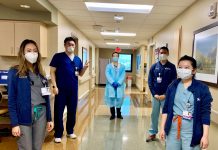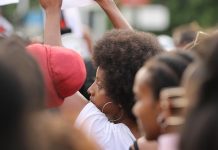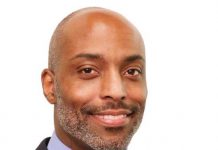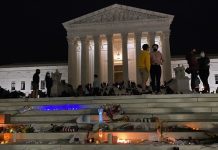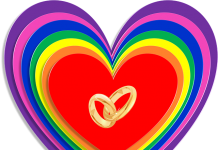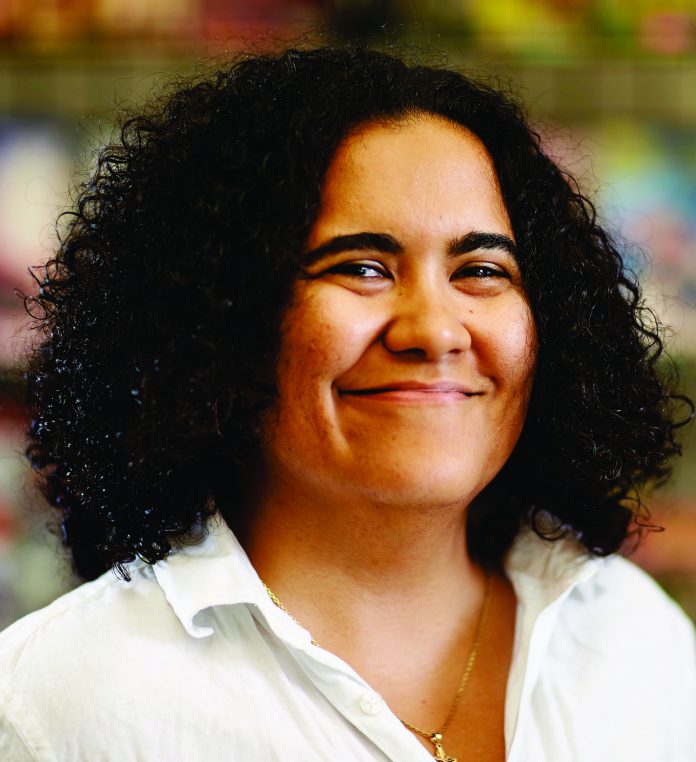
By Erika Abad
In 2018, shows like “Pose” and “Black Lightning,” emerged as television shows that provide positive representation of LGBT characters on television. The former is the first to have a mostly LGBT Latinx and African-American cast, and to have activist writers like Janet Mock involved in constructing critical portrayals of characters within our community. “Pose” widens the lens of who is “Black” by including Afro-Latina storylines as well as exploring the ways in which Black LGBT people move to different regions and or neighborhoods in search of better living opportunities.
Their historic examples of Black gay youth being kicked out of their homes continues to be true. Not all are lucky to fi nd community members who are able to adopt them into alternative families. “Pose” also provides us a lens of examining how HIV historically aff ect the African-American community as much as it shows us the choices our trans foremothers had to make to celebrate themselves and to survive in worlds in which they weren’t supposed to exist. Airing on FX, its powerful story remains limited to those who can aff ord access.
“ Black Lighting,” on the other hand, is on basic television. Based on a comic book of the same name, the show integrates contemporary story lines into the comic book universe.
The first show of its kind on basic television, “Black Lightning’s” bulletproof lesbian is the first lesbian superhero on television and, the one of the few lesbians on screen whose parents are affirming of her choices to be a superhero, a lesbian and a medical student.
The bulletproof lesbian, “Thunder,” also exists in a Black world, dating women of color. Most recently, the hashtag #ThunderGrace represents them on social media as one of the few couples of color on television.
Actress Nafessa Williams, the straight-identified actress who plays “Thunder,” endorses the hashtag because she wants to help her fans promote lesbian of color relationships given how few there have been on television.
“The Bold Type,” which airs on FreeForm, gave us a queer couple of color on the margin, with brief scenes in which black characters share the screen together.
These shows contribute to a relatively recent trend across streaming sites, television channels and cable to incorporate more holistic representations of LGBT characters on screen. They’re primary characters and, in the case of “Pose,” the central focus of programming, allowing many of us to support black television that tells stories addressing historic and ongoing struggles among Blacks in the United States.
Still, in real life, it’s been almost three months since a black male couple had been stabbed while being called “faggot,” and an “abomination.”
I remember when the news story appeared on my feed shortly after the November holiday and right before the winter holiday season was beginning.
At home, we seek positive and affirming representations of color in print and on screen, we remain aware that representation is only the beginning. Representation allows current youth to have conversations with their families that my generation couldn’t necessarily have.
The young black woman on “This Is Us,” exemplifies part of the complexity when she tells her white grandmother and aunt before telling her black parents. She is but another character on TV who is grappling with her preference and how to, in light of the racial dynamics of her family and her father’s hunger to serve her community, find safe and affirming places with which to express herself.
While “This is Us,” “Black Lightning” and “Pose,” tell very different stories about Black LGBT life and the potential of Black family support, it is important to note that these dialogs need to include how the ways in which we love each other and ourselves remain on the margins.
Friends continue to talk about having to “choose” their identity at work regarding alliance meetings affirming our communities’ needs.
Coalition politics outside of work continue to seek ways to center Black LGBT community needs because, despite visibility onscreen, our community still has the highest rates of youth homelessness, discriminatory based violence and poverty.
It is the hope that affirming and successful representations on screen provide us an avenue by which to normalize the heroes, dancers and unconditionally loved people we hope to be. It’s but one way in which we change the conversation of how, when, and why our potential and our resilience is in/visible.
In Las Vegas, there are a variety of ways we are seeking to come together. The second and fourth Monday, Black LGBT meetings are hosted at The Center on Maryland Parkway. Black lesbian-owned Pour Coffeehouse on Eastern Avenue and Sunset Road is beginning to host community events to talk about community concerns. Visit their websites for more information on where and when they take place.





